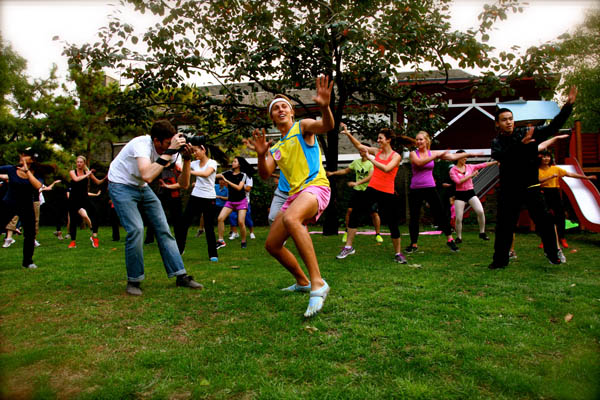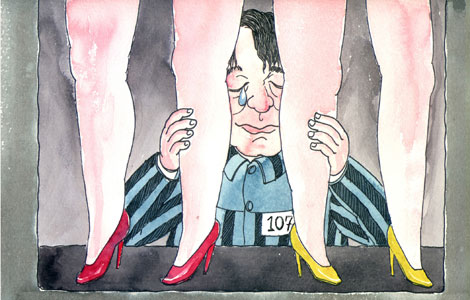Swede ambitions
Updated: 2013-07-23 02:38
By Tang Zhe (China Daily)
|
||||||||
Linus Holmsater thinks the Chinese work too hard and the long hours will ultimately take a toll on their health. He wants to give them a chance at a better, healthier lifestyle.
When Linus Holmsater first came to Beijing in 2009, he was confounded by the daily routine of the Chinese around him.
Unlike his home country Sweden where almost every young person would exercise, and where he is never more than a 15-minute bike ride from the natural forests, Chinese cities have few parks, and the people tend to spend most of their time sitting behind their desks at work or sitting behind dinner tables or in a KTV room.
 |
|
Linus Holmsater leads a Heyrobics session at the Swedish embassy in 2012. Photos Provided to China Daily |
"In Sweden few people work overtime, but China is the opposite. People are very focused on their careers, they work long hours," Holmsater says. "After work, most of the socializing is done around a dinner table. If this goes on for long, there will be a big health problem in China."
Holmsater quit his investment company job in 2011 in Beijing and has started to promote Heyrobics, a popular Swedish aerobics exercise created by his father Johan Holmsater in 1978.
"I didn't have time to do exercises, and I really needed some time to break away from that," says the 28-year-old. "I think everyone needs a third space beyond office and home. For some it could be a ballet studio or a private club, and we are making ourselves that third space for a lot of people to relax and have fun."
According to Holmsater, his father used to be a pentathlon athlete and was trying to get into the Olympics until a bad back ended his ambitions. The senior Holmsater was told by his doctor to rest, but the situation got worse after two years.
"When he retired from that kind of sport, he couldn't even walk," Holmsater says. "It was really bad, so he started to create some exercises he could do as rehabilitation."
As the senior Holmsater felt himself becoming stronger, he put music together with the movements and invited friends to join him. The sport then grew popular first in universities, and then all over Sweden.
"It is the biggest sport in Sweden today. About 6 percent of Swedish citizens are members of the Heyrobics association," Holmsater says.

 'Despicable' minions upset Depp's 'Lone Ranger' at box office
'Despicable' minions upset Depp's 'Lone Ranger' at box office
 'Taken 2' grabs movie box office crown
'Taken 2' grabs movie box office crown
 Rihanna's 'Diamonds' tops UK pop chart
Rihanna's 'Diamonds' tops UK pop chart
 Fans get look at vintage Rolling Stones
Fans get look at vintage Rolling Stones
 Celebrities attend Power of Women event
Celebrities attend Power of Women event
 Ang Lee breaks 'every rule' to make unlikely new Life of Pi film
Ang Lee breaks 'every rule' to make unlikely new Life of Pi film
 Rihanna almost thrown out of nightclub
Rihanna almost thrown out of nightclub
 'Dark Knight' wins weekend box office
'Dark Knight' wins weekend box office
Most Viewed
Editor's Picks

|

|

|

|

|

|
Today's Top News
Knife attack injures 4 in Beijing
Yuan gains 34% against USD in past 8 years
Live Report: 56 dead, over 400 injured in quake
Hard landing of China economy no topic at G20
US Navy drops bombs on Australia's reef
Woman jailed in Dubai after reporting rape
Guangdong to probe airport bomber's allegations
Police meets GSK representative after scandal
US Weekly

|

|







